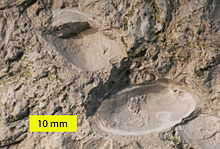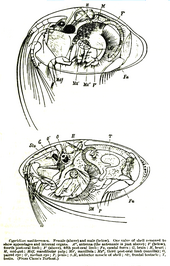┘å┘ģž¦█īž┤ ┘垬ž¦█īž¼: ž¦ž▓ 31 ž©┘ć 37 ž¦ž▓ 37
┘ģ┘łžČ┘łž╣: ┘ģ┘łž¼┘łž»ž¦ž¬ ┘ģž▓ž¦žŁ┘ģ ┘ł ┘ģžČž▒
-
14th September 2019 #31{žó┘ü┘䞦█ī┘å}┌®ž¦ž▒ž©ž▒ ┘ģ┘łž½ž▒

- ┘ģžŁ┘ä ž│┌®┘ł┘垬
- ┘éž▓┘ł█ī┘å
- ┘å┘łž╣ žŁ█ī┘łž¦┘å ž«ž¦┘å┌»█ī
- ž¦┘å┘łž¦ž╣ ┘ģž¦┘ć█ī ┘ł ž┤ž▒█ī┘ģ┘Š ┘ł ┘䞦ž©ž│ž¬ž▒ ┘ł ┌»█īž¦┘ć
- ž¬ž¦ž▒█īž« ž╣žČ┘ł█īž¬
- May 2018
- ž┤┘ģž¦ž▒┘ć ž╣žČ┘ł█īž¬
- 24622
-
14th September 2019 #32{žó┘ü┘䞦█ī┘å}┌®ž¦ž▒ž©ž▒ ┘ģ┘łž½ž▒

- ┘ģžŁ┘ä ž│┌®┘ł┘垬
- ┘éž▓┘ł█ī┘å
- ┘å┘łž╣ žŁ█ī┘łž¦┘å ž«ž¦┘å┌»█ī
- ž¦┘å┘łž¦ž╣ ┘ģž¦┘ć█ī ┘ł ž┤ž▒█ī┘ģ┘Š ┘ł ┘䞦ž©ž│ž¬ž▒ ┘ł ┌»█īž¦┘ć
- ž¬ž¦ž▒█īž« ž╣žČ┘ł█īž¬
- May 2018
- ž┤┘ģž¦ž▒┘ć ž╣žČ┘ł█īž¬
- 24622
ž¦█ī┘å ž╣┌®ž│ ž▒┘ł ž©ž¦ ┘ģ█ī┌®ž▒┘łž│┌®┘ł┘Š ž©ž¦ ž©ž▓ž▒┌»┘å┘ģž¦█ī█ī 250 ž©ž▒ž¦ž▒ ┌»ž▒┘üž¬┘ģ ž¦ž▓ ž¦█ī┘å ┘枦 ┘Šž▒ ž┤ž»┘ć ž»ž▒ ž¦┌®┘łž¦ž▒█ī┘ł┘ģ ┘ģ┘å
ž»ž▒ ž¦┌®┘łž¦ž▒█ī┘ł┘ģ ┘ü┘éžĘ ┌»█īž¦┘ć ┘ł ž┤ž▒█ī┘ģ┘Š ┘ł žŁ┘äž▓┘ł┘å ┌®┘ä█īž▒ ž©┘łž»
ž¦┌»ž▒ ┌®ž│█ī ž¦ž│┘ģ ž¦█ī┘å ┘ģ┘łž¼┘łž»ž¦ž¬ ž▒┘ł ┘ģ█ī ž»ž¦┘åž» ž©┌»┘ł█īž»
-
16th September 2019 #33{žó┘ü┘䞦█ī┘å}┌®ž¦ž▒ž©ž▒ ┘ģ┘łž½ž▒

- ┘ģžŁ┘ä ž│┌®┘ł┘垬
- ┘éž▓┘ł█ī┘å
- ┘å┘łž╣ žŁ█ī┘łž¦┘å ž«ž¦┘å┌»█ī
- ž¦┘å┘łž¦ž╣ ┘ģž¦┘ć█ī ┘ł ž┤ž▒█ī┘ģ┘Š ┘ł ┘䞦ž©ž│ž¬ž▒ ┘ł ┌»█īž¦┘ć
- ž¬ž¦ž▒█īž« ž╣žČ┘ł█īž¬
- May 2018
- ž┤┘ģž¦ž▒┘ć ž╣žČ┘ł█īž¬
- 24622
┌å█īž▓ ┘枦█ī█ī ┌®┘ć ž«┘łž»┘ģ ž©┘ć ž»ž│ž¬ ž¦┘łž▒ž»┘ģ
žĄ┘Äž»┘Ä┘ü█īž¦┘å (Ostracoda) ž▒ž»┘ćŌĆīž¦█ī ž¦ž▓ ž│ž«ž¬ŌĆī┘Š┘łž│ž¬ž¦┘å ┘ćž│ž¬┘åž» ┌®┘ć ┌»ž¦┘ć ž©┘ć žó┘åŌĆī┘枦 ┘ģ█ī┌»┘ł█ī ž»ž¦┘å┘ćŌĆīž¦█ī ┘ć┘ģ ┌»┘üž¬┘ć ┘ģ█īŌĆīž┤┘łž». ž»ž▒ ž¦█ī┘å ž▒ž»┘ć ž»ž▒ žŁž»┘łž» █Ę█░ ┘ćž▓ž¦ž▒ ┌»┘ł┘å┘ć ž┤┘垦ž│ž¦█ī█ī ž┤ž»┘ć ┌®┘ć ž»ž▒ ┌å┘åž»█ī┘å ž▒ž¦ž│ž¬┘ć ž»ž│ž¬┘ćŌĆīž©┘åž»█ī ž┤ž»┘ćŌĆīž¦┘åž».
žĄž»┘ü█īž¦┘å ž│ž«ž¬ŌĆī┘Š┘łž│ž¬ž¦┘å█ī ┌®┘ł┌å┌®ŌĆīž¦┘åž» ┌®┘ć žĘ┘ł┘ä žó┘åŌĆī┘枦 ┘ģž╣┘ģ┘ł┘䞦┘ŗ ž»ž▒ žŁž»┘łž» █ī┌® ┘ģ█ī┘ä█īŌĆī┘ģž¬ž▒ ž¦ž│ž¬ ž¦┘ģž¦ ž»ž▒ ┌»┘ł┘å┘ćŌĆī┘枦█ī ┘ģž«ž¬┘ä┘ü ž¦ž▓ █░┘½█▓ ž¬ž¦ █│█░ ┘ģ█ī┘ä█īŌĆī┘ģž¬ž▒ ┘ć┘ģ ž¬┘üž¦┘łž¬ ┘ģ█īŌĆī┌®┘åž». ž©ž»┘å žó┘åŌĆī┘枦 ž¬ž«ž¬ ž¦ž│ž¬ ┘ł žĄž»┘ü█ī ž»┘ł┌®┘ü┘ćŌĆīž¦█ī ž¦ž▓ ž¼┘åž│ žó┘ć┌® █īž¦ ┌®█īž¬█ī┘å ž¦ž▓ ž©ž»┘å žó┘åŌĆī┘枦 ┘ģžŁž¦┘üžĖž¬ ┘ģ█īŌĆī┌®┘åž». ┘ä┘ł┘䞦█ī ž©█ī┘å ž»┘ł ┌®┘ü┘ć ž¦█ī┘å žĄž»┘ü ž»ž▒ ž©ž¦┘䞦 ┘ł ┘Šž┤ž¬ ž©ž»┘å žó┘åŌĆī┘枦 ┘łž¦┘éž╣ ž┤ž»┘ćŌĆīž¦ž│ž¬.
ž©ž«ž┤ ž¦ž╣žĖ┘ģ ž│┘å┌»┘łž¦ž▒┘ćŌĆī┘枦█ī █īž¦┘üž¬┘ć ž┤ž»┘ć ž¦ž▓ ž©┘åž»┘Šž¦█īž¦┘å ┘ģž▒ž©┘łžĘ ž©┘ć žĄž»┘ü█īž¦┘å ž¦ž│ž¬ ┘ł ž©ž¦ž▓┘ć ž▓┘ģž¦┘å█ī ┘üž│█ī┘äŌĆī┘枦█ī žĄž»┘ü█ī ž¦ž▓ ┌®ž¦┘ģž©ž▒█ī┘å ž¬ž¦ ž¦┘ģž▒┘łž▓┘ć ž▒ž¦ ž»ž▒ž©ž▒ ┘ģ█īŌĆī┌»█īž▒ž». žĄž»┘ü█īž¦┘å žóž© ž┤█īž▒█ī┘å ž»ž▒ ┌®┘ćž▒ž©ž¦█ī ž©ž¦┘䞬█ī┌® █īž¦┘üž¬┘ć ž┤ž»┘ć ┌®┘ć ┘ģž▒ž©┘łžĘ ž©┘ć ž╣žĄž▒ ž¦ž”┘łž│┘å ž¦ž│ž¬ ┘ł ž¦žŁž¬┘ģž¦┘䞦┘ŗ ž»ž▒ ž¼ž▒█īž¦┘å ž│█ī┘ä ž»ž▒ ┘䞦ž©┘䞦█ī ž»ž▒ž«ž¬ž¦┘å ž©┘ć žó┘å ┘ģ┘åžĘ┘é┘ć ž▒ž│█īž»┘ć ž¦ž│ž¬.
-
16th September 2019 #34{žó┘ü┘䞦█ī┘å}┌®ž¦ž▒ž©ž▒ ┘ģ┘łž½ž▒

- ┘ģžŁ┘ä ž│┌®┘ł┘垬
- ┘éž▓┘ł█ī┘å
- ┘å┘łž╣ žŁ█ī┘łž¦┘å ž«ž¦┘å┌»█ī
- ž¦┘å┘łž¦ž╣ ┘ģž¦┘ć█ī ┘ł ž┤ž▒█ī┘ģ┘Š ┘ł ┘䞦ž©ž│ž¬ž▒ ┘ł ┌»█īž¦┘ć
- ž¬ž¦ž▒█īž« ž╣žČ┘ł█īž¬
- May 2018
- ž┤┘ģž¦ž▒┘ć ž╣žČ┘ł█īž¬
- 24622
Ostracods, or ostracodes, are a class of the Crustacea (class Ostracoda), sometimes known as seed shrimp. Some 70,000 species (only 13,000 of which are extant) have been identified,[1] grouped into several orders. They are small crustaceans, typically around 1 mm (0.039 in) in size, but varying from 0.2 to 30 mm (0.008 to 1.181 in) in the case of Gigantocypris. Their bodies are flattened from side to side and protected by a bivalve-like, chitinous or calcareous valve or "shell". The hinge of the two valves is in the upper (dorsal) region of the body. Ostracods are grouped together based on gross morphology. While early work indicated the group may not be monophyletic;[2] and early molecular phylogeny was ambiguous on this front,[3] recent combined analyses of molecular and morphological data found support for monophyly in analyses with broadest taxon sampling [4]
Ecologically, marine ostracods can be part of the zooplankton or (most commonly) are part of the benthos, living on or inside the upper layer of the sea floor. Many ostracods, especially the Podocopida, are also found in fresh water, and terrestrial species of Mesocypris are known from humid forest soils of South Africa, Australia and New Zealand.[5] They have a wide range of diets, and the group includes carnivores, herbivores, scavengers and filter feeders.
As of 2008, around 2000 species and 200 genera of nonmarine ostracods are found.[6] However, a large portion of diversity is still undescribed, indicated by undocumented diversity hotspots of temporary habitats in Africa and Australia.[7] Of the known specific and generic diversity of nonmarine ostracods, half (1000 species, 100 genera) belongs to one family (of 13 families), Cyprididae.[7] Many Cyprididae occur in temporary water bodies and have drought-resistant eggs, mixed/parthenogenetic reproduction, and the ability to swim. These biological attributes preadapt them to form successful radiations in these habitats.[8]
Contents- 1 Etymology
- 2 Fossils
- 3 Description
- 4 Palaeoclimatic reconstruction
- 5 Ecology
- 6 References
- 7 External links
Etymology
Ostracod comes from the Greek ├│strakon meaning shell or tile. The word "ostracize" comes from the same root due to the practice of voting with shells or potsherds.[9]
Fossils
The large ostracod Herrmannina from the Silurian (Ludlow) Soeginina Beds (Paadla Formation) on eastern Saaremaa Island, Estonia
Ostracods are "by far the most common arthropods in the fossil record"[10] with fossils being found from the early Ordovician to the present. An outline microfaunal zonal scheme based on both Foraminifera and Ostracoda was compiled by M. B. Hart.[11] Freshwater ostracods have even been found in Baltic amber of Eocene age, having presumably been washed onto trees during floods.[12]
Ostracods have been particularly useful for the biozonation of marine strata on a local or regional scale, and they are invaluable indicators of paleoenvironments because of their widespread occurrence, small size, easily preservable, generally moulted, calcified bivalve carapaces; the valves are a commonly found microfossil.
A find in Queensland, Australia in 2013, announced in May 2014, at the Bicentennary Site in the Riversleigh World Heritage area, revealed both male and female specimens with very well preserved soft tissue. This set the Guinness World Record for the oldest penis.[13] Males had observable sperm that is the oldest yet seen and, when analysed, showed internal structures and has been assessed as being the largest sperm (per body size) of any animal recorded. It was assessed that the fossilisation was achieved within several days, due to phosphorus in the bat droppings of the cave where the ostracods were living.[14]
Description
Anatomy of Cypridina mediterranea
The body of an ostracod is encased by two valves, superficially resembling the shell of a clam. A distinction is made between the valve (hard parts) and the body with its appendages (soft parts).
Body parts
The body consists of a head and thorax, separated by a slight constriction. Unlike many other crustaceans, the body is not clearly divided into segments. The abdomen is regressed or absent, whereas the adult gonads are relatively large.
The head is the largest part of the body, and bears most of the appendages. Two pairs of well-developed antennae are used to swim through the water. In addition, there is a pair of mandibles and two pairs of maxillae. The thorax typically has two pairs of appendages, but these are reduced to a single pair, or entirely absent, in many species. The two "rami", or projections, from the tip of the tail, point downwards and slightly forward from the rear of the shell.[15]
Ostracods typically have no gills, instead taking in oxygen through branchial plates on the body surface. Most ostracods have no heart or circulatory system, and blood simply circulates between the valves of the shell. Nitrogenous waste is excreted through glands on the maxillae, antennae, or both.[15]
The primary sense of ostracods is likely touch, as they have several sensitive hairs on their bodies and appendages. However, they do possess a single naupliar eye, and, in some cases, a pair of compound eyes, as well.[15]
Palaeoclimatic reconstruction
Articulated ostracod valves in cross-section from the Pn of central Texas; typical thin section view of an ostracod fossil
A new method is in development called mutual ostracod temperature range (MOTR), similar to the mutual climatic range (MCR) used for beetles, which can be used to infer palaeotemperatures.[16] The ratio of oxygen-18 to oxygen-16 (╬┤18O) and the ratio of magnesium to calcium (Mg/Ca) in the calcite of ostracod valves can be used to infer information about past hydrological regimes, global ice volume and water temperatures.
Ecology
Lifecycle
Male ostracods have two penii, corresponding to two genital openings (gonopores) on the female. The individual sperm are often large, and are coiled up within the testis prior to mating; in some cases, the uncoiled sperm can be up to six times the length of the male ostracod itself. Mating typically occurs during swarming, with large numbers of females swimming to join the males. Some species are partially or wholly parthenogenetic.[15]
In most ostracods, eggs are either laid directly into the water as plankton, or are attached to vegetation or the substratum. However, in some species, the eggs are brooded inside the shell, giving them a greater degree of protection. The eggs hatch into nauplius larvae, which already have a hard shell.[15]
Predators
A variety of fauna prey upon ostracods in both aquatic and terrestrial environments. An example of predation in the marine environment is the action of certain cuspidariid clams in detecting ostracods with cilia protruding from inhalant structures, thence drawing the ostracod prey in by a violent suction action.[17] Predation from higher animals also occurs; for example, amphibians such as the rough-skinned newt prey upon certain ostracods.[18]
Bioluminescence
Some ostracods, such as Vargula hilgendorfii, have a light organ in which they produce luminescent chemicals.[19] Most use the light as predation defense, while some use the light for mating (only in the Caribbean). These ostracods are called "blue sand" or "blue tears" and glow blue in the dark at night. Their bioluminescent properties made them valuable to the Japanese during World War II, when the Japanese army collected large amounts from the ocean to use as a convenient light for reading maps and other papers at night. The light from these ostracods, called umihotaru in Japanese, was sufficient to read by but not bright enough to give away troops' position to enemies.[20]
-
16th September 2019 #35{žó┘ü┘䞦█ī┘å}┌®ž¦ž▒ž©ž▒ ┘ģ┘łž½ž▒

- ┘ģžŁ┘ä ž│┌®┘ł┘垬
- ┘éž▓┘ł█ī┘å
- ┘å┘łž╣ žŁ█ī┘łž¦┘å ž«ž¦┘å┌»█ī
- ž¦┘å┘łž¦ž╣ ┘ģž¦┘ć█ī ┘ł ž┤ž▒█ī┘ģ┘Š ┘ł ┘䞦ž©ž│ž¬ž▒ ┘ł ┌»█īž¦┘ć
- ž¬ž¦ž▒█īž« ž╣žČ┘ł█īž¬
- May 2018
- ž┤┘ģž¦ž▒┘ć ž╣žČ┘ł█īž¬
- 24622
-
16th September 2019 #36{žó┘ü┘䞦█ī┘å}┌®ž¦ž▒ž©ž▒ ┘ģ┘łž½ž▒

- ┘ģžŁ┘ä ž│┌®┘ł┘垬
- ┘éž▓┘ł█ī┘å
- ┘å┘łž╣ žŁ█ī┘łž¦┘å ž«ž¦┘å┌»█ī
- ž¦┘å┘łž¦ž╣ ┘ģž¦┘ć█ī ┘ł ž┤ž▒█ī┘ģ┘Š ┘ł ┘䞦ž©ž│ž¬ž▒ ┘ł ┌»█īž¦┘ć
- ž¬ž¦ž▒█īž« ž╣žČ┘ł█īž¬
- May 2018
- ž┤┘ģž¦ž▒┘ć ž╣žČ┘ł█īž¬
- 24622
-
16th September 2019 #37{žó┘ü┘䞦█ī┘å}┌®ž¦ž▒ž©ž▒ ┘ģ┘łž½ž▒

- ┘ģžŁ┘ä ž│┌®┘ł┘垬
- ┘éž▓┘ł█ī┘å
- ┘å┘łž╣ žŁ█ī┘łž¦┘å ž«ž¦┘å┌»█ī
- ž¦┘å┘łž¦ž╣ ┘ģž¦┘ć█ī ┘ł ž┤ž▒█ī┘ģ┘Š ┘ł ┘䞦ž©ž│ž¬ž▒ ┘ł ┌»█īž¦┘ć
- ž¬ž¦ž▒█īž« ž╣žČ┘ł█īž¬
- May 2018
- ž┤┘ģž¦ž▒┘ć ž╣žČ┘ł█īž¬
- 24622
ž¦žĘ┘䞦ž╣ž¦ž¬ ┘ģ┘łžČ┘łž╣
┌®ž¦ž▒ž©ž▒ž¦┘å█ī ┌®┘ć ž»ž▒ žŁž¦┘ä ┘ģž┤ž¦┘ćž»┘ć ž¦█ī┘å ┘ģ┘łžČ┘łž╣ ┘ćž│ž¬┘åž»
ž»ž▒ žŁž¦┘ä žŁž¦žČž▒ 1 ┌®ž¦ž▒ž©ž▒ ž»ž▒ žŁž¦┘ä ┘ģž┤ž¦┘ćž»┘ć ž¦█ī┘å ┘ģ┘łžČ┘łž╣ ž¦ž│ž¬. (0 ┌®ž¦ž▒ž©ž▒ž¦┘å ┘ł 1 ┘ģ┘ć┘ģž¦┘å ┘枦)
ž¬ž©┘ä█īž║ž¦ž¬ ┘ģž¬┘å█ī :
┌®█ī┘ü ┘ä┘Š ž¬ž¦┘Š
ŌĆó



 ┘Šž¦ž│ž« ž©ž¦ ┘å┘é┘ä ┘é┘ł┘ä
┘Šž¦ž│ž« ž©ž¦ ┘å┘é┘ä ┘é┘ł┘ä